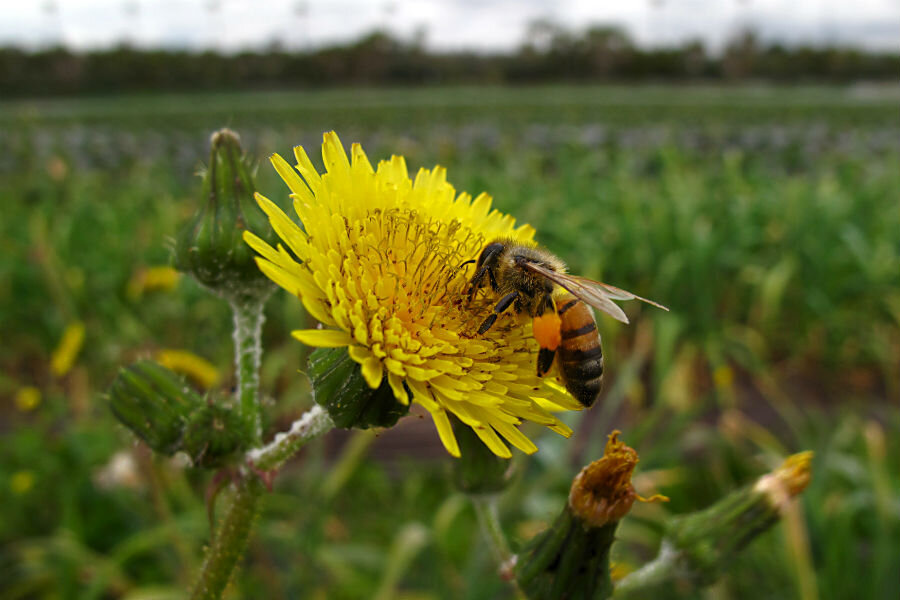Are pesticides changing how bees forage?
Loading...
The latest research on pesticides’ effects on bees and their behavior suggests that widely used chemical insect deterrents could negatively affect bees’ relationships with flowers.
A new study published in Functional Ecology concluded that neonicotinoid pesticides, which are widely used to protect crops against aphids, grubs, and other insects – cause bees to forage for more pollen from wildflowers than do bees not exposed to the insecticides, but that the bees treated with neonics were less efficient, learned to pollinate differently, and ended up with different floral preferences than the ones left chemical-free.
“Bees rely on learning to locate flowers, track their profitability and work out how best to efficiently extract nectar and pollen,” said the paper’s senior author Nigel Raine, a University of Guelph professor and pollination researcher, in a university news release.
“If exposure to low levels of pesticide affects their ability to learn, bees may struggle to collect food and impair the essential pollination services they provide to both crops and wild plants,” Dr. Raine added.
Raine and lead author Dara Stanley decided to test the impact of thiamethoxam on the Bombus terrestris audax subspecies of European bumblebees. The scientists chose thiamethoxam, a neonicotinoid, to differentiate their experiment from previous studies, many of which primarily focused on the effects of the widely used neonic, imidacloprid, they said. The duo used thiamethoxam concentrations consistent with “field conditions” observed in wild bee populations, dosing separate bumblebee colonies with solutions of either the typical amount of the neonic or simply sugar water, as a control.
The nearly two-week study concluded with the both the treated and untreated bees being introduced to an outdoor “flight arena” filled with flowering Lotus corniculatus, or bird's-foot trefoils, and Trifolium repens white clovers. The two European Fabaceae flower types were chosen for their complexity and importance to bumblebees, according to the researchers. The bees were introduced to the flight zone individually, where their foraging patterns and flower manipulation – and by extension, their success at pollination – were recorded by observers who had no knowledge of the insects’ treatment groups.
The results showed that the bees exposed to the neonic solution spent more time foraging overall, but less time at each flower and less time learning foraging strategies. The insecticide-treated bees also visited the trefoils nearly 60 percent more often than the control bees while visiting the clovers around 20 percent less. The researchers recorded more data on the bees’ foraging habits, concluding that “chronic exposure to field-realistic levels of thiamethoxam altered the interactions between bumblebees and morphologically complex wildflowers.”
“Our results suggest that current levels of pesticide exposure could be significantly affecting how bees are interacting with wild plants, and impairing the crucial pollination services they provide that support healthy ecosystem function,” Raine said.
The exposed bees “initially foraged faster and collected more pollen,” while the clean ones “may be investing more time and energy in learning,” according to Mr. Stanley.
The results contrast with those of previous studies involving imidacloprid, which found that bees treated with that neonic brought back less pollen less often. But thiamethoxam’s impact on the insects’ learning and foraging process, especially under “challenging conditions in a wild, fully-outdoor setting,” could augment the learning issues and negatively impact the bees’ “delivery of pollination services” as well as potentially contribute to worldwide bumblebee population problems.
“Our findings have important implications for society and the economy as pollinating insects are vital to support agriculture and wild plant biodiversity,” Stanley said.








